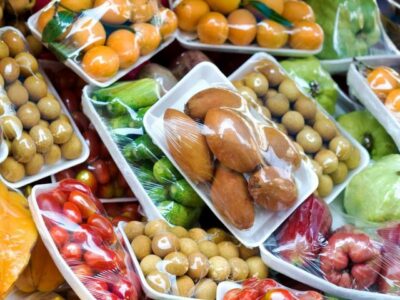
Comparing Different Types of Anti Fog Additives: Which Masterbatch is Right for Your Product
Fog is one of the biggest challenges that the food and agricultural industry faces. The accumulation of water vapour on agricultural films or food packaging surfaces poses a dual threat, diminishing the shelf life and product allure. Comparable to a visible cluster of water droplets suspended in the air, fog takes form when water vapour condenses into minute liquid droplets. This phenomenon finds its reflection within transparent plastic packaging, arising from the condensation of water vapour upon the material’s surface. The resultant fog not only diminishes shelf appeal but also imperils product quality. A remedy to this predicament lies in the incorporation of anti-fog masterbatches and treatments during the plastic sheet’s processing, combating the formation of fog and preserving product clarity.
Understanding the Fog Phenomenon
Before we plunge into the realm of anti-fog masterbatches, let’s grasp the essence of fog itself. Imagine that mystifying mist that occasionally blankets your transparent plastic packaging – that’s the outcome of water vapour condensing into minute droplets. This occurs when the surface temperature of the plastic drops below the dew-point temperature of the air within the packaging.
How Anti-Fog Masterbatch helps
Anti-fog masterbatches are akin to the unsung heroes of the packaging world. They are ingenious chemicals engineered to thwart the emergence of those vexing water droplets that transform your packaging into a hazy canvas. Initially developed by NASA for helmet visors, these additives have gracefully transitioned into transparent surfaces such as glass, optical applications, and clear plastic packaging.
Two Paths to Clarity: Internal and External Approaches
Two primary approaches exist to combat fog: the internal additives and the external coatings. Both methods share the common goal of minimizing surface tension metamorphosing clustered water droplets into a delicate, uniform film. The end result will be Impeccably clear packaging that accentuates the allure of your product.
Visualize minuscule surfactants orchestrating a subtle symphony on the surface of your plastic sheet, gently altering the interaction between water droplets and plastic. These non-ionic surfactants are the heart and soul of internal anti-fog additives. They are seamlessly integrated into the plastic during the extrusion process, either as concentrated solutions or masterbatches.
Here’s the magic: a slight incompatibility between the surfactants and the plastic triggers their migration to the surface. This migration effectively reduces the surface tension of water droplets, metamorphosing them into a uniform, transparent layer that refrains from obstructing your view. This is the secret behind the vanishing act of that misty haze.